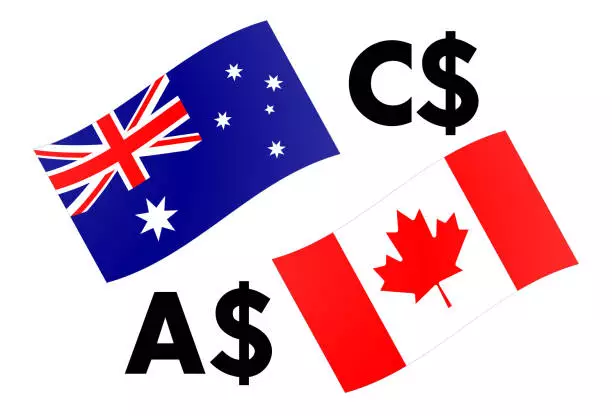The landscape of international trade has shifted dramatically with the advent of what analysts are calling Trade War 2.0. This new phase extends beyond the previous US-China trade tensions that began in early 2018 and now encapsulates a broader spectrum of the US’s key trading partners. As tariff measures are reintroduced—especially following President Trump’s recent executive orders imposing substantial tariffs on goods from Canada, Mexico, and China—the global markets are understandably jittery. There is a growing concern that these escalations in trade tensions could herald a return of stagflation, a term that evokes the combination of stagnant economic growth and high inflation—a combination that can be particularly damaging to economies worldwide.
The implications of an escalated trade war are multifaceted. A critical aspect of this scenario is the influence on commodity-based currencies, particularly the Australian dollar (AUD) and the Canadian dollar (CAD). As fears grow regarding a slowdown in the global economy, commodity prices often fall along with associated currencies. The AUD, heavily linked to base metals like iron ore, and the CAD, reliant on the oil sector, may be under significant pressure as trade tensions deter investment and dampen economic outlooks.
With the market sentiment sliding towards bearish, traders are closely monitoring strategic resistance points in currency pairings like AUD/USD and USD/CAD to gauge the health of these currencies. For instance, the medium-term outlook for AUD/USD has been complicated by its downward trajectory, recently stalling against critical resistance around 0.6330 after touching a swing low on January 13. Technical indicators suggest that the bearish trend that has prevailed since late September remains unbroken unless there is a notable price increase above this resistance line.
A technical analysis of the AUD/USD market is revealing. The ongoing resistance at 0.6330 signifies a pivotal level that traders must watch closely. If the pair fails to break above this threshold, further declines could materialize, with key support levels looming below at 0.6120 and 0.6030, raising alarms for investors holding positions in the Australian dollar. Such movements underscore a potential negative feedback loop where bearish market sentiment exacerbates currency weaknesses, resulting in diminished purchasing power and economic output across trade-reliant sectors.
On the other hand, the USD/CAD had a more resilient response, evident from a gap up in pricing on February 3, while probing the long-term resistance zone near 1.4690—the highest point since early 2016. The sheer momentum of the USD relative to CAD points to a stronger US dollar amidst global uncertainty, yet caution remains essential. Given that the daily Relative Strength Index (RSI) suggests overbought conditions, market participants might anticipate corrections before any further upside.
However, traders should remain vigilant: a breakdown below 1.4300 would invalidate the current bullish outlook for USD/CAD and signal a potential downturn, pointing toward a significant pivot in market sentiment. This, in turn, could heighten fears about global economic stability and a sustained period of stagflation.
As Trade War 2.0 unfolds, the broader lesson is that effective navigation of these dynamics requires understanding the interconnectedness of trade relations and currency movements. For policymakers, the challenge remains in addressing these tensions without triggering drastic economic slowdowns. Therefore, widespread vigilance in both the policy landscape and market strategies is crucial as we head deeper into this uncertain economic terrain.
The impact of ongoing trade disputes on commodities and associated currencies mirrors a larger narrative concerning the health of the global economy—a narrative that underscores the urgency for strategic economic planning and risk management to mitigate potential downturns and elevate long-term prosperity.

